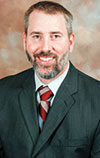Forage resources have historically dictated where cow-calf production is located. Even as a feedyard-focused person, we have to acknowledge the importance of forages and alternative feeds for the entire beef production system, where greater than 85 percent of the feed needs to make market-ready beef are forages.
As a result, cow-calf production has generally been located where availability of grazed and harvested forages is abundant. One exception is if cows graze crop residues or secondary forage crops.
We are initiating research and education projects to establish cows in traditional cropping areas with fall-winter-spring grazing and penning cows up in the summer. This is a five-year project to establish mechanics of producing calves in cropping enterprises (i.e., traditional farms) as well as compare the production and economics to traditional cow-calf systems.
However, many of these cow systems will rely on at least partial confinement if it makes sense (and hopefully cents) due to excess feedlot capacity.
For the beef industry as a whole, the question is: Where will feedyard production be in the future? Numerous publications have attempted to quantify cattle on feed as a percentage of capacity. The USDA quantifies the number of cattle in feedyards with a capacity greater than 1,000 head.
It is difficult to measure or quantify cattle in smaller yards in terms of both capacity of yards that size and the number of cattle in those yards.
In general, with cow numbers declining over the past 30 years, the number of calves to fill those yards has declined. Many have estimated that cattle can only fill 75 to 80 percent of feedyard capacity available in the U.S. We have generally fed the cattle we have to bigger weights across more days in feedyards to maintain capacity and beef production over that period.
Despite perceived overcapacity of feedyards, many yards in Nebraska are expanding pens. The industry has to evaluate both increasing pen/bunk space at existing locations and construction of new facilities. Most expansion occurring today (in Nebraska anyway) is pen additions at existing yards, not construction of new facilities.
Future locations for finishing cattle will be dictated by numerous factors, but most likely on any economic advantages of one region over another. Water availability is important, but likely impacts future feedyard locations by impacting local crop production.
Crop production and feedyards being colocated is very logical given basis on grain and production. Another reason feedyards benefit from being located near crop production is utilization of pond effluent and proper manure management. With that said, grain is readily moved to areas of high demand and will likely continue if other factors outweigh inexpensive feed locally.
In addition to supply of grain, many feedyard locales benefit if close to feed byproducts that help cheapen feed costs and also benefit both the industry producing the feedstuff (market for their byproduct) and also the feedyard, as many are priced very competitive to traditional energy or protein feeds.
Freedom to operate will be important, which includes federal, state and local guidelines and restrictions on operation of concentrated animal feeding operations. In some respects, low population areas are beneficial for location of feedyards, but it also makes attracting and retaining employees more challenging.
Abundant supplies of feeder cattle are beneficial, but most feedyards rely on pricing cattle delivered into yards, so distance of feeder cattle or calves to a feedyard is probably more of a negative for prices received by the cow-calf sector than a negative for the price into the feedyard.
A similar issue exists for marketing finished cattle but from the opposite perspective. Packing capacity is very important for local feedyard production as many producers are rightfully marketing cattle on a carcass or dressed basis, which means transportation is a cost for the feedyard. As a result, a thriving packing industry with some competition of plants is beneficial for feedyard locations.
The last issue is climate. Humid, high-rainfall areas are not conducive to open feedyard production systems. Much of the Plains feeding region developed due to climatic advantages over Midwestern climates. In high-rainfall areas, much more interest has developed in complete confinement production systems.
Building systems are a greater cost, which must be offset by other advantages outlined above such as feed costs or other geographic advantages. Based on these factors, feedyard cattle production is suited to many regions but requires the regions to have unique advantages.
Ultimately, economics of feedyard production will drive cattle to geographic regions that result in efficient production and cheaper cost of gain. We are optimistic in Nebraska that many of these advantages exist in the state, which may increase cattle on feed here as expansion continues. Time will tell. ![]()

-
Galen E. Erickson
- Beef Feedlot Extension Specialist
- University of Nebraska – Lincoln
- Email Galen E. Erickson









